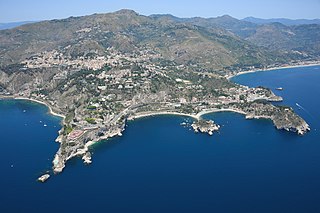
Gothic architecture is an architectural style that was prevalent in Europe from the late 12th to the 16th century, during the High and Late Middle Ages, surviving into the 17th and 18th centuries in some areas. It evolved from Romanesque architecture and was succeeded by Renaissance architecture. It originated in the Île-de-France and Picardy regions of northern France. The style at the time was sometimes known as opus Francigenum ; the term Gothic was first applied contemptuously during the later Renaissance, by those ambitious to revive the architecture of classical antiquity.

The Doge's Palace is a palace built in Venetian Gothic style, and one of the main landmarks of the city of Venice in northern Italy. The palace included government offices, a jail, and the residence of the Doge of Venice, the elected authority of the former Republic of Venice. It was originally built in 810, rebuilt in 1340 and extended and modified in the following centuries. It became a museum in 1923 and is one of the 11 museums run by the Fondazione Musei Civici di Venezia.

Taormina is a comune (municipality) in the Metropolitan City of Messina, on the east coast of the island of Sicily, Italy. Taormina has been a tourist destination since the 19th century. Its beaches on the Ionian Sea, including that of Isola Bella, are accessible via an aerial tramway built in 1992, and via highways from Messina in the north and Catania in the south. On 26–27 May 2017 Taormina hosted the 43rd G7 summit.

The Grand Canal is the largest channel in Venice, Italy, forming one of the major water-traffic corridors in the city.

Ca' Foscari, the palace of the Foscari family, is a Gothic building on the waterfront of the Grand Canal in the Dorsoduro sestiere of Venice, Italy.

The Palazzo Vecchio is the town hall of Florence, Italy. It overlooks the Piazza della Signoria, which holds a copy of Michelangelo's David statue, and the gallery of statues in the adjacent Loggia dei Lanzi.

Jesi is a comune (municipality) in the province of Ancona, in the Italian region of Marche.

Pienza is a town and comune in the province of Siena, Tuscany, in the historical region of Val d'Orcia. Situated between the towns of Montepulciano and Montalcino, it is considered the "touchstone of Renaissance urbanism".

The Zisa is a grand 12th-century Norman hunting lodge and summer palace in the western area of Palermo, in the region of Sicily, Italy. The edifice was started around 1165 by Arab craftsmen under the rule of the Norman conqueror of Sicily, king William I. It was not finished until 1189, under the rule of William II. It is presently open to the public for tours.

Venetian Gothic is the particular form of Italian Gothic architecture typical of Venice, originating in local building requirements, with some influence from Byzantine architecture, and some from Islamic architecture, reflecting Venice's trading network. Very unusually for medieval architecture, the style is at its most characteristic in secular buildings, with the great majority of surviving examples of the style being secular.

Italian Gothic architecture (also called temperate Gothic architecture, has characteristics that distinguish it considerably from those of the place of origin of Gothic architecture, France, and from other European countries in which this language has spread.

The Palace of the Kings of Navarre of Olite or Royal Palace of Olite is a castle-palace in the town of Olite, in Navarre, Spain. It was one of the seats of the Court of the Kingdom of Navarre, since the reign of Charles III "the Noble" until its conquest by Castile (1512).
Surely there is no king with a more beautiful castle or palace and with so many gilded rooms (...) it could not say or even could imagine how magnificent and sumptuous is this palace (...)

The Doge's Palace is a historical building in Genoa, northern Italy.

The Palazzo Comunale, also known as the Palazzo del Popolo of San Gimignano has been the seat of the civic authority in the comune since the 13th century. It is located on the Piazza del Duomo close to the Collegiate Church of the Assumption of the Blessed Virgin Mary. The building and Collegiate Church are at the heart of the medieval town, and are part of the UNESCO World Heritage Site of the "Historic Centre of San Gimignano".
Francesco Sozzi was an Italian painter, active in style characteristic of the Rococo period in Palermo. He is distinguished from other fellow painters for his graceful, delicate, and elegant style.

Romanesque architecture is an architectural style of medieval Europe characterised by semi-circular arches. The term "Romanesque" is usually used for the period from the 10th to the 12th century with "Pre-Romanesque" and "First Romanesque" being applied to earlier buildings with Romanesque characteristics. Romanesque architecture can be found across the continent, diversified by regional materials and characteristics, but with an overall consistency that makes it the first pan-European architectural style since Imperial Roman Architecture. The Romanesque style in England is traditionally referred to as Norman architecture.

Palazzo Santa Sofia is a palace in Mdina, Malta, located in Villegaignon Street, across the square from the cathedral. Its ground floor was built in 1233, and it is believed to be the oldest surviving building in the city. The upper floor is of a much later construction, being built in the 20th century.

Palazzo Dandolo Paolucci is a Renaissance palace in Venice, Italy, located in the San Polo district and overlooking the Grand Canal. The palazzo neighbors Palazzo Dolfin and Palazzo Civran Grimani.

Palazzo Orio Semitecolo Benzon is a Gothic palace in Venice, Italy, built in the 14th century. The palazzo is located in the Dorsoduro district and overlooks the Grand Canal between Casa Santomaso and Casa Salviati.

Via XX Settembre is one of the main thoroughfares in the center of Genoa, Italy, located within the San Vincenzo district. It is slightly less than a kilometer long.





















